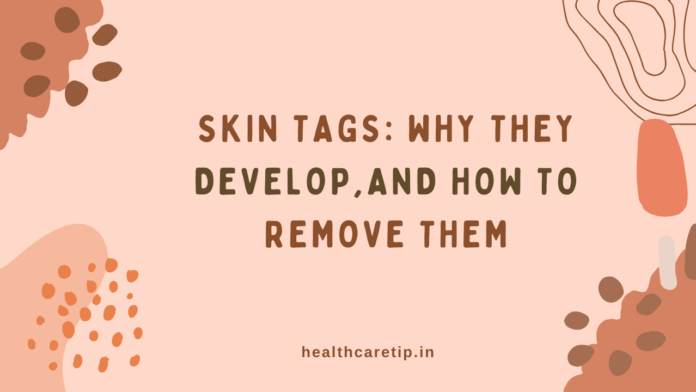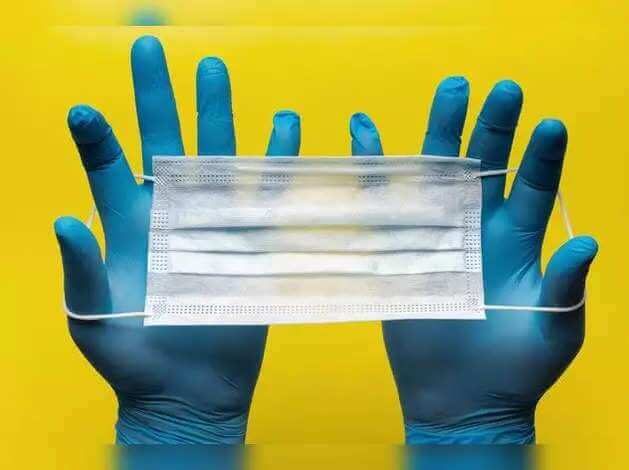Skin tags, also known as acrochordons, are small, soft, benign growths that typically appear on areas of the body where skin rubs against skin or clothing. These painless outgrowths are made up of collagen fibers, blood vessels, and skin, and while they are harmless, many people choose to remove them for cosmetic reasons or due to irritation.
Contents
Why Do Skin Tags Develop?
Skin tags can develop for a number of reasons, and while they are common in adults, certain factors may increase the likelihood of developing them:
1. Friction
Skin tags often form in areas with frequent skin-on-skin or skin-on-clothing friction, such as the neck, underarms, groin, eyelids, and under the breasts.
2. Age
People over 40 are more prone to developing skin tags. As skin loses elasticity with age, it may become more susceptible to developing these growths.
3. Obesity
Excess weight can lead to increased skin folds and friction, making it a major risk factor for skin tag formation.
4. Hormonal Changes
Pregnant women may develop skin tags due to hormonal fluctuations and increased skin friction.
5. Genetic Predisposition
If your family members have skin tags, you’re more likely to develop them as well.
6. Insulin Resistance and Diabetes
There is a known association between skin tags and insulin resistance, which is common in people with Type 2 diabetes.
How to Remove Skin Tags Safely
There are several ways to remove skin tags, both at home and with the help of a medical professional. It’s always best to consult a doctor before attempting removal, especially if the growth is large, painful, or located in a sensitive area.
1. Medical Procedures
- Cryotherapy: Freezing the tag with liquid nitrogen.
- Cauterization: Burning the tag off using electrical energy.
- Excision: Cutting the skin tag off with sterile scissors or a scalpel.
- Ligation: Tying off the tag at its base with a surgical thread to cut off blood flow.
These procedures are quick, usually painless, and done in a doctor’s office.
2. Over-the-Counter Solutions
Some OTC products are available in the form of creams, patches, or freeze kits. These products are designed to dry out the skin tag or freeze it off.
3. Natural Remedies (Use With Caution)
- Tea Tree Oil: Apply a few drops daily with a cotton swab. Known for its antiseptic properties.
- Apple Cider Vinegar: Soak a cotton ball and apply to the tag for 10–15 minutes daily.
- Banana Peel or Garlic: Natural enzymes may help shrink the tag over time.
Note: Natural remedies may not work for everyone and can irritate the skin. Always do a patch test and consult a doctor.
Can Skin Tags Be Prevented?
While it’s not always possible to prevent skin tags entirely, here are some tips to reduce your risk:
- Maintain a healthy weight to reduce friction.
- Wear breathable, loose-fitting clothing.
- Keep skin dry and clean, especially in folds.
- Use powders or anti-chafing creams in high-friction areas.
- Manage blood sugar levels if you’re diabetic or insulin resistant.
When to See a Doctor
- You should seek medical advice if:
- The skin tag bleeds, grows rapidly, or changes color.
- You’re unsure whether it’s a skin tag or another skin condition.
- It becomes painful or irritated.
Conclusion
Skin tags are harmless, but understanding why they develop and how to remove them empowers you to manage them safely. Whether you opt for medical treatment or natural remedies, it’s essential to ensure proper hygiene and consult a professional when in doubt. With the right care, skin tags can be removed easily and effectively.
FAQs:
A: No, skin tags are not contagious and cannot spread from person to person.
A: Once removed, the same skin tag won’t grow back, but new ones can form elsewhere on the body.
Q: Can I cut off a skin tag myself?
A: It is not recommended to cut off skin tags at home due to the risk of bleeding, infection, and scarring.









